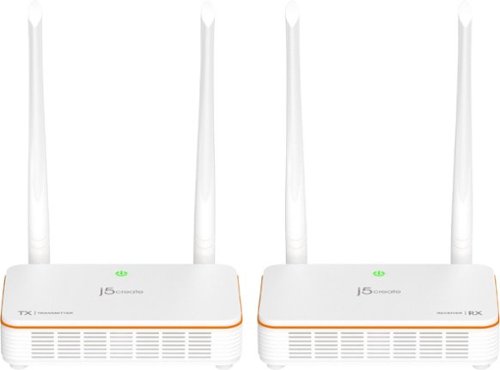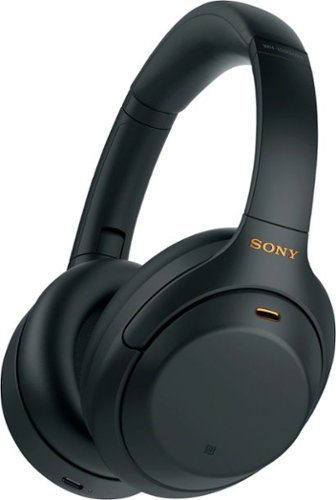bredeker
bredeker's Stats
- Review Count70
- Helpfulness Votes63
- First ReviewFebruary 21, 2014
- Last ReviewMay 18, 2025
- Featured Reviews0
- Average Rating4.7
Reviews Comments
- Review Comment Count0
- Helpfulness Votes0
- First Review CommentNone
- Last Review CommentNone
- Featured Review Comments0
Questions
- Question Count0
- Helpfulness Votes0
- First QuestionNone
- Last QuestionNone
- Featured Questions0
- Answer Count4
- Helpfulness Votes0
- First AnswerFebruary 22, 2014
- Last AnswerOctober 26, 2016
- Featured Answers0
- Best Answers0
Transmit audio and video with this j5create HDMI over wireless extender. Wi-Fi connectivity enables high-speed data transmission to your HDMI-enabled TV set, HDTV or projector up to 200 feet away with low latency. This j5create HDMI over wireless extender is compatible with macOS, iOS, Windows and Android devices for versatility.
Convenient, but not quite a cable replacement
Customer Rating

4.0
Posted by: bredeker
from WI
on September 25, 2020
The JVAW53 wireless HDMI extender is a great solution if you want to get video output to a TV or monitor from an inconveniently-placed device. Sometimes, a wired connection just is not practical due to distance or walls and funiture in between (and the device must stay where it is to maintain its current spousal-approval-factor). In such circumstances, j5Create might just save the day with this product. However, it does fall a bit short of a direct connection with a physical cable, so be prepared for some trade-offs.
(In the interest of full disclosure, j5Create provided a JVAW53 unit in exchange for an honest review as part of the Tech Insider Network.)
Set-up and use really couldn't be much easier. Just note which device is the transmitter (labeled TX) and which is the receiver (labeled RX), and connect them to your device and your TV/monitor, respectively. That's pretty much all there is to it - my TV recognized the JVAW53 RX unit as an always-available HDMI video source. Apart from the status screen that is displayed when the video source is off, it'd be hard to tell that there is anything different from using a regular HDMI cable. It's nice that j5Create provides one HDMI cable in the box for use with either the transmitter or receiver, though you will need to supply one of your own to use with the other half of the system.
The JVAW53 only supports 1080p resolution (at 60 Hz) at most. I did not find there to be noticeable latency problems. My primary use was to use a Playstation 3 as a Blu-ray player, and there were no issues such as audio being out-of-sync with lip movements in movies. I also tried out some PS3 games, and my own rusty reflexes were more of an issue than any latency added by the wireless transmission.
Unfortunately, I did notice some minor video artifacts and common, albeit brief, sound drop-outs that seem to be due to the JVAW53. Both problems went away when using a direct HDMI connection. The sound drop-outs also happened while playing video from a second device - laptop - via HDMI out. Changing the position and proximity of the JVAW53 transmitter and receiver did not seem to improve the issues. The video artifacts are minor and I did not really notice them while watching movies. The sound glitches, though, happened in both games and movies, and I did find them distracting. I am hopeful that a firmware update will improve the situation, particularly with the sound. In the meantime, this might be a consideration if you're interested in the JVAW53 primarily for connecting a device that plays movies.
Still, the JVAW53 fills a particular niche and does it pretty well. A simple cable might not suffer from the audio glitches, but it also cannot compete with the convenience of a wireless HDMI extender like the JVAW53 for cleanly connecting devices blocked by distance or other obstacles.
I would recommend this to a friend!
Mobile Submission: False
+1point
1out of 1found this review helpful.
Sony's intelligent noise-cancelling headphones with premium sound elevate your listening experience with the ability to personalize and control everything you hear. Get up to 30 hours of battery life with quick charging capabilities, enjoy an enhanced Smart Listening feature set, and carry conversations hands-free with speak-to-chat.
Excellent in pretty much every way
Customer Rating

5.0
Posted by: bredeker
from WI
on August 19, 2020
The Sony WH-1000XM4 headphones are superb. They sound great, feature very effective noise cancellation, and work with multiple devices nearly seamlessly. The price may seem high, but I think you're certainly getting what you pay for with them.
(In the interest of full disclosure, Sony did provide me with a "Platinum Silver" WH-1000XM4 in exchange for an honest review. The opinions here are my own.)
The most obvious feature of the WH-1000XM4 is the adaptive noise cancellation, which begins working as soon as you power them up. (Though, even before powering them on, I felt that the cushioned earcups already noticeably damped outside noise.) It works very well, producing a very great sense of being "isolated" from surrounding noise. While switching between the WH-1000XM4's and my old pair of noise-canceling headphones (by JBL), I noticed a surprisingly significant reduction in white noise. I had never noticed this white noise before on the old headset, but Sony's noise cancellation system made it really stand out due to its relative superiority. The system also has a good-sounding ambient mode, which helps pass through outside sound you wish to hear - like a conversation.
Beyond the noise cancellation, the headphones produce great sound. I'm not an audiophile by any stretch, but I thought the out-of-box sound quality was excellent. The mobile companion app allows for a lot of further tweaking to suit different tastes. As far as the "outgoing" sound picked up by the microphone goes, everyone I talked to via phone while using this headset indicated my voice came through very clearly.
But even more than the sound and noise cancellation performance, what I really love about the WH-1000XM4 are the numerous "convenience features" that Sony developed. The headphones can detect when I begin speaking, and will automatically pause whatever media is playing and engage the ambient sound mode so that I can easily hear who I'm talking with and carry on a conversation. The touch-based gestures for controlling playback and answering calls work great, and are so much more convenient that hunting for small buttons along the edges of the earphones. Furthermore, covering up the entire right earcup with a hand will momentarily engage the ambient sound mode (reducing the volume on media being played, but not stopping it). I have found the latter feature to be especially useful - for instance, when someone wants my attention, I can use this gesture to listen to them without needing to begin the conversation by speaking myself.
To top it all off, I really like the multi-device support. I needed to enable this via the companion app, but once I did, I could use the app to pair the headset with multiple devices. Only two devices can be "actively connected" at a time, but additional "inactive" device pairings are remembered. (I'm unsure if there's a limit, but I got to at least 6: 2 active and 4 inactive.) To use the headset with a device it's not actively connected to, it was easy to use the companion app on my phone to select an active device and "Disconnect" it (rather than remove/unpair it), then tap an inactive pairing to connect to it. The headphones will automatically switch between the active devices, and that worked very well in my experience. I kept my phone as one of the active devices, and then alternated the second active device between a laptop and tablet. I could be listening to music on the laptop or watching a video on the tablet, and if I got a call, the WH-1000XM4's would automatically pause my media and seamlessly switch the audio to my phone. A quick double-tap on the touch-sensitive gesture pad, and I could answer the call; once done, my music or video would begin playing again and sound would automatically switch back.
There is really nothing substantial I can complain about with these headphones. Since the headphones often rely on the companion app to access features, especially for activating different sets of active devices, desktop versions (for Windows and Mac) would be welcome additions to the iOS and Android versions available now. It would also be nice if Sony could make the microphone functional when the unit is powered off or charging, so that in the worst case it could just behave like a traditional plug-in headset. (It's only able to play sound in this situation, not record voice.)
In summary - these are great headphones. If you want effective noise cancellation, great sound, and excellent multi-device support, Sony's WH-1000XM4 are perfect for you.
I would recommend this to a friend!
Mobile Submission: False
0points
1out of 2found this review helpful.
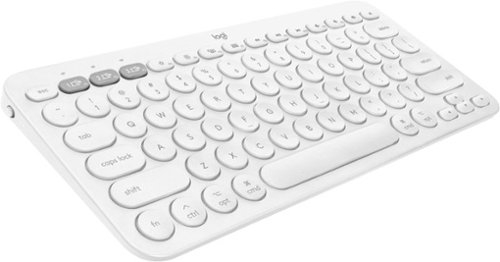
Logitech - K380 TKL Bluetooth Scissor Keyboard for Mac with Compact Slim Profile - Off-White
The Logitech K380 Multi-Device Bluetooth keyboard for Mac makes any space minimalist, modern, and multi-device by letting you type on your iPhone, iPad, MacBook, iMac more.* Connect with three devices simultaneously and switch instantly between them. The K380 Multi-Device for Mac is compact and lightweight. You can type on the device of your choice, so you can own your space~anywhere.
Minimalist keyboard especially for Apple devices
Customer Rating

5.0
Posted by: bredeker
from WI
on July 21, 2020
(As part of the Best Buy Tech Insider Network program, I was provided a Logitech K380 for Mac unit in exchange for an honest review.)
Logitech released this variant of their existing K380 keyboard with a tweaked layout specialized for Apple Mac computers (it also works well for iOS and iPadOS mobile devices). One of the key features of both this and the general K380 model is the multi-device support, which allows the easy toggling between up to 3 different devices that the keyboard can be bound to via Bluetooth. Binding is very easy to do, and I found the Bluetooth connection to be completely stable.
Although Logitech aims this keyboard particularly at Mac users, iPhones and iPads also work great. Beyond that, I tested and confirmed the K380 for Mac also works reasonably well with Windows PC's - though beware, the relative positions of the Alt (Opt) and Windows (Cmd) keys are flipped from the standard PC layout. (Even the Logi Options software doesn't allow switching the functions of these keys, though it allows customization of some of the function keys. Unlike the standard K380, the keys are also not dual-labeled with both functions.) If you would primarily use this with Apple devices, rest assured you could still use it with a PC or Android device in a pinch; but otherwise you might prefer the standard K380.
They keyboard itself is quite compact. It would definitely appeal to people that enjoy a clean (even spartan) desk. Alternately, its size makes it a great candidate to keep off to the side of a desk, ready to use with virtually any secondary device (phone, tablet, or laptop) for heavier typing. Unfortunately, the compact size is requiring some adjustment for me. It all feels slightly more cramped than most keyboards I'm used to - the keys don't seem smaller, but it does seem the pitch between keys is slightly less. It may only be around 1mm less intra-key spacing, but it's noticeable to me.
My final verdict is that the K380 is a decent keyboard for the price, particularly if it's a supplemental keyboard to use with more than one phone or tablet as an alternative to the on-screen keyboard for writing longer pieces. If the minimalistic look appeals to you (and you're not worried about adjusting to a layout that might be slightly smaller), it can also serve as a nice primary keyboard. This Mac-specific edition is most appealing for using with Apple products. It does work with other brands of devices pretty well, too, though I think it would be a good improvement to add further customizability for this model to the Logi Options software on Windows.
I would recommend this to a friend!
Mobile Submission: False
0points
0out of 0found this review helpful.
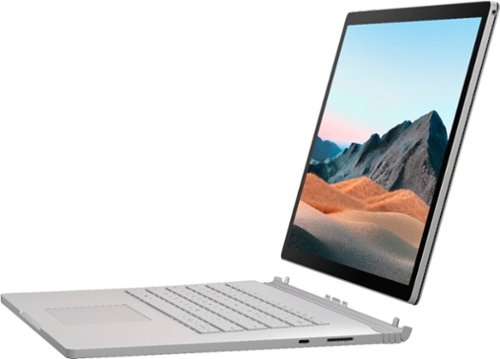
Microsoft - Surface Book 3 15" Touch-Screen PixelSense - 2-in-1 Laptop - Intel Core i7 - 16GB Memory - 256GB SSD - Platinum
Performance meets versatility. From intensive video and graphics files to high-octane gaming, the most powerful Surface laptop yet combines speed, graphics, and long battery life with the versatility of a laptop, tablet, and portable studio. Tackle your biggest demands with quadcore powered 10th Gen Intel~ Core~ processors, blazing NVIDIA~ graphics, and high-resolution PixelSense~ Display designed for Surface Pen* and touch.
Unique and powerful, but not quite perfect
Customer Rating

5.0
Posted by: bredeker
from WI
on July 9, 2020
Microsoft's Surface Book line-up probably doesn't need much introduction now that it's on its third iteration. But just-in-case: the Surface Book is Microsoft's take on a convertible (or 2-in-1) laptop that can operate like a traditional laptop or in a tablet-like form. Unlike devices in this category from other companies, Microsoft does not rely on hinge tricks to flip the screen into the tablet-like mode - instead, the entire screen can be detached and used as a tablet, or turned around and reattached to the keyboard "base." Along with a touchpad and large battery that greatly increases battery life while connected, the "base" also houses a reasonably powerful (by laptop standards) Nvidia GPU.
I received a 15-inch Surface Book 3 with 16 GB RAM and a 256 GB SSD to review as part of the Best Buy Tech Insider Network program. Reviewers in this invitation-only program are provided products for the purpose of writing honest, unbiased reviews. While I did not purchase it at retail, the computer I received for review should be fully representative of a retail unit. This review is my own opinion of the Surface Book 3.
Out of the box, the fit and finish of my Surface Book 3 unit were all good - just as I'd expect within the premium laptop market segment. The unique hinge design makes it a bit bulkier when closed than a traditional laptop, and there's definitely more weight in the screen than for a traditional laptop. However, it's also very well balanced, and when using it on my lap, I never notice an awkward weight distribution. Only when picking it up to move it or readjust position can I tell it's not a normal laptop. It's a far cry from other tablet + keyboard dock combinations I've used that were prone to tipping backword due to the tablet weight. They keyboard and trackpad work very well (though I must say that I still find Apple's trackpads with Force Touch/haptic feedback to be the best).
The "PixelSense" screen looks great. The Surface Books feature a 3:2 aspect ratio - not quite the regular widescreen aspect ratio, but close to the 16:10 ratio found on some competing laptops. When detached and standing alone, the 15 inch screen really does seem very large (maybe even ungainly) for a tablet. The front-facing camera in the display supports Windows Hello facial recognition for authentication. This is the first computer I've used with support for this, and the speed and reliability of this system has seemed very good so far. (I have an iPhone Xs, and I'd say it has set my expectations in this regard pretty high.)
Because the Surface Book 3's CPU - and CPU cooling system - must reside in the tablet-like screen, Microsoft chose a 10th generation Intel Core i7 CPU that is more power efficient but also objectively less powerful than in many competing laptops. Nonetheless, in daily use, the Surface Book 3 has never felt lacking for power for me. I was especially impressed by how smoothly it performed while working on a few 3D CAD projects in Autodesk Fusion 360. My desktop PC (with a Ryzen 1700 and Radeon RX580) actually struggles a bit in Fusion; it frequently pauses while editing these project on a 4k monitor. In contrast, the Surface Book 3 exhibited none of the pausing while attached to the same 4k monitor. It didn't take too long for the tablet portion of the Surface Book to warm up and kick in its fans. Although Fusion was using the Nvidia GPU, it was not taxing it. For comparison, I also undocked the tablet portion of the Surface Book to force it to use the integrated Intel Iris GPU. I was pleasantly surprised that there was no noticeable hit to rendering speed while working in Fusion 360.
My perception of the performance was quite positive overall. In addition to Fusion 360, I installed some of the Jetbrains developer tools to see how it would fare with those programs. The Surface Book 3 was just barely slower, by an insignificant amount, at building a software project than my employer-provided MacBook Pro. The Surface Book was still a very responsive experience for loading, navigating, and modifying the code. The configuration I received is actually one Microsoft recommends on the Surface Book 3 product page for software developers, and I think it is pretty well-suited to that use case.
I also installed Jedi: Fallen Order to compare gaming performance to my desktop. The Surface Book 3 was able to handle this game at least as well as the desktop and its older GPU, if not even slightly better. Although the Surface Book 3 is not a laptop designed for gamers, I think it's definitely suitable for light gaming even on a pretty recent title. The Surface Book did get quite hot, however, including on the back side of the tablet/screen - it was definitely pushed harder than in Fusion 360.
Battery life for light-duty tasks (like Web browsing or using productivity software) was no problem. While I did not reach Microsoft's official estimates of 17.5 hours, I got at least 10 hours of time on a charge (and it wasn't quite drained). I did notice that the power management will drain both batteries (both the "tablet" battery in the screen, as well as the additional battery in the keyboard base) to about 80%, and then proceed to draw solely from the larger battery in the base until it is low. This is a nice way to keep a healthy power reserve available if you want to detach the screen.
While I really like the Surface Book 3 overall, I definitely cannot say it's perfect. As far as the hardware itself, I personally would find it more elegant if it supported a Thunderbolt port rather than, or in addition to, the proprietary Surface Connect port. (Microsoft has apparently stated that the omission of Thunderbolt is for improved security, which is a good reason.) Beyond the hardware, I also thought it was very disappointing that Microsoft only includes a Windows 10 Home license. Certainly for software development, the Hyper-V support in Windows 10 Pro would be useful. At the price point this computer comes in at, additional cost for Pro features feels a bit like a nickel-and-diming move. On the bright side, the Windows 10 May 2020 update will add WSL v2, which should soften this particular blow for a lot of software developers (Docker will be able to run using WSL 2, even for Home licenses). But that, in turn, brings me to another disappointment - the May 2020 update is still blocked for the Surface Book 3 at the time I write this.
I have also experienced some behavior quirks and outright bugs with the Surface Book. For instance, sometimes when I plug the included charger in, Windows puts a warning on the battery/power icon in the taskbar, and clicking on the icon indicates Windows has detected a "Slow Charger." Reconnecting the charger does not help, but restarting the computer has always fixed it. On at least one occasion, after reattaching the screen to the base, the discrete Nvidia GPU was not recognized until I deteached and reattached one more time. I've also experienced a couple of freezes that have required me to force-reboot the machine. So, it seems that there are still some software bugs to be worked out (though it makes me that much more anxious for the May 2020 update, in case anything has been improved already).
Despite these issues, I'm still very positive on the Surface Book 3. It feels like a very good quality laptop, with the bonus versatility afforded by being able to undock the screen and use as a tablet. I am pleased with the performance; in fact, I was impressed to see it match or exceed my desktop PC (even with a 3 year age difference, the Surface Book 3 is doing it with a mobile CPU, and a "low-power" one at that). I'm optimistic that most of the hardware issues I noted are actually software or firmware growing pains that will get ironed out eventually. I'd really like to give this product a 4.5 star rating if I could, but on the basis of my optimism that my observed issues will be fixed, I'm rounding it up to a full 5 stars rather than down to 4.
I would recommend this to a friend!
Mobile Submission: False
+1point
1out of 1found this review helpful.
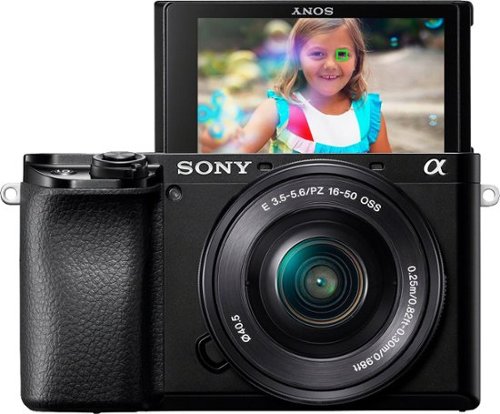
Sony - Alpha 6100 Mirrorless 4K Video Camera with E PZ 16-50mm Lens - Black
Take eye-catching photos with this Sony Alpha 6100 mirrorless digital camera with 16-50mm lens. The BIONZ X image processor coupled with the 24.2MP CMOS sensor ensures images of the highest quality. The 16-50mm lens offers a 24-75mm equivalent focal length range, making this Sony Alpha 6100 mirrorless digital camera ideal for portraits and even nighttime photography.
Advanced Auto-focus and Beautiful Images
Customer Rating

5.0
Posted by: bredeker
from WI
on January 7, 2020
I have owned a few Sony mirrorless cameras over the past 7 or so years, and the new Alpha 6100 impressed me with its great balance of features - especially the improved auto-focus system. Sony provided the camera in exchange for this review, and I was pleased to be able to use it to capture some shots over the last two weeks, during the Christmas holiday season. I'll mention my impressions of the features I found noteworthy.
If you're considering purchasing this camera, you may already understand quite a bit about digital camera technology and why you would want to invest in one in order to capture pictures that smartphones simply aren't capable of. If you haven't, the short answer is that these cameras have dramatically bigger sensors that capture more light and can produce the shallow-depth-of-field ("blurry background") effect without all the digital processing tricks that smartphones rely on. In the enthusiast stand-alone camera market, there are two primary types of cameras - DSLR's and "mirrorless" cameras (the Alpha 6100 is a mirrorless camera). Without saying too much about the technical differences, the latter are so named because they eliminate the physical mirrors that DSLR's use - the viewfinder is actually a tiny LCD screen that shows you exactly the picture the camera is going to take, including helpful information overlays. Traditionally, the downside of mirrorless cameras has been slower autofocus systems and perceptible lag in the viewfinder. However, Sony and other companies have been relentlessly tackling these problems, and even the industry giants Canon and Nikon are producing mirrorless systems now to cater to people that like their advantages.
As mentioned, I have used multiple Sony cameras - mirrorless always appealed to me as the inevitable future for stand-alone cameras, and I have invested in a few additional lenses for Sony's mirrorless camera system. In the meantime, Sony has really improved their technology and made some waves amongst professional photographers. The Sony Alpha 6100 takes their current state-of-the-art auto-focus system with real-time tracking and adds it to a model in reach of hobbyists and families that want to capture gorgeous photo memories. The auto-focus system can be switched between person and pet tracking modes, and has an uncanny ability to lock onto subjects' eyes. Once locked onto a subject, continuing to hold the shutter button half-pressed will keep the focus locked on, and does a fantastic job of following that subject as they move and turn - often even if the subject is partially- or fully-obscured momentarily. This is definitely the best auto-focus system I've used on a Sony camera, and from other reviews of the Alpha 6100's siblings, Sony seems to have one of the top focusing systems right now. If you're thinking of this camera as an investment to capture pictures of children in motion, the auto-focus system is a very good reason to purchase the Alpha 6100. The only downside is that you will need to change some of the options out-of-the-box to enable the real-time tracking and tweak how it works to your preferences.
Another improvement over Sony's older models that I really like is the improvements to smartphone connectivity. Sony has had an optional companion app for mobile Android and iOS devices for a while, and they renamed it from "PlayMemories" to "Imaging Edge" since my previous camera model. The app is not the most intuitive, and I did find it a little cumbersome to get it connected initially. (I was using an iPhone; maybe it would be slightly easier with Android. However, NFC did work - I'm not sure if that improvement in Imaging Edge is due to an improvement by Sony or Apple, but it's cool that NFC can be used on iOS now to simplify the Wi-Fi connection.) I have found it to be reliable enough - no dropped connections between camera and phone yet. Sony's app has always allowed you to turn your phone into a remote control for the camera, which is a great feature if you want to set up the camera on a tripod and take a group photo that you can be part of. It's also long supported transferring photos from the camera to the phone, to make it easier to share them (or edit them with another app). However, one feature that is new with latest series of Alpha cameras is an additional Bluetooth connection support which the app leverages to "geotag" photos using your phone's GPS. I always thought it was really neat to be able to see my vacation photos taken with a smartphone on a map based on where they were taken, and had wished that data could be integrated with my "good" camera. Although I've used apps that log your phone's location and then use that to add the data to photos later based on timestamp, it's pretty cool that it can now be integrated right as the photos are taken. This is a feature that some of Sony's competitors have already had for a while, but it's a nice-to-have on the Alpha 6100. (Of course, if you use this feature and are conscious about privacy, be careful to consider removing geotag information before sharing photos online.)
The Alpha 6100 takes great pictures. It takes some practice to get the hang of adding effects that everyone is used to adding with filters in smartphone apps, but the results really are great. With a 24MP sensor, the images capture a lot of information and are great for printing. Due to the larger sensor, pictures taken in low light exhibit less digital noise than smartphones (though smartphones can compensate with more software corrections). I've very pleased with the color and sharpness I've gotten. I do not typically shoot a lot of video, but this camera can take 4K footage and I thought the video quality was quite good on a 4K TV. It does not support some of the more advanced videography features (like S-Log), though higher-end Sony models do.
The Alpha 6100 is typically sold in a bundle with a small, 16-50mm power-zoom lens. The lens is compact enough, especially compared to typical DSLR lenses. It's a OK starter lens and works well with the auto-focus system. Sony and other manufacturers make a number of E-mount lenses with a range of prices. Although many will cost as much or more than the camera (which is common for any interchangeable-lens camera system), there are some reasonably-priced gems and many of the expensive ones are highly rated.
I really appreciated that Sony is still using the same battery that earlier cameras in their NEX and Alpha 6000 series used. This means all my spare batteries work with any camera and charger. On the downside, Sony's higher end models are now beginning to use a newer batter that has longer life, but I found battery life to be more than sufficient for my needs. (The batteries are small and it's easy to care a spare or two.) If you're not already a Sony camera user, this may not matter to you - but I would like to point out that all of Sony's cameras have featured USB charging built-in, which is actually quite convenient (they can charge with a simple micro-USB cable; no need to to travel with a charger unless you want to).
The Alpha 6100 uses a slightly lower resolution LCD screen in its electronic viewfinder than in higher-end Sony models, but I still find it very clear to use. One feature I miss that Sony has included on other models is an artificial horizon overlay in the viewfinder (or rear screen) that makes it easy to get level horizons in your shorts. The rear screen is touch-sensitive, though the interface still must be operated with the controls on the rear of the camera - the touch is mostly used for tapping to pick a focus point if you can't get the camera to focus where you want. The rear touch screens of Sony's latest models now do flip up 180 degrees - basically a "selfie mode." I think using this camera for selfies is a bit silly, but it could certainly be very practical if you're interested in making YouTube-style videos.
My existing investment in the Sony mirrorless system makes me admittedly biased, but Sony has been making some very good cameras. There are highly-regarded competitors, but the Alpha 6100 is still a great purchase. It's an extremely nice upgrade to older cameras at the lower end of Sony's Alpha 6000 lineup, adding the latest auto-focus and smartphone connectivity features while retaining lens and battery compatibility. And for anyone considering the investment in a stand-alone camera, the Alpha 6100 has a nice blend of features for a reasonable price.
I would recommend this to a friend!
Mobile Submission: False
+1point
1out of 1found this review helpful.
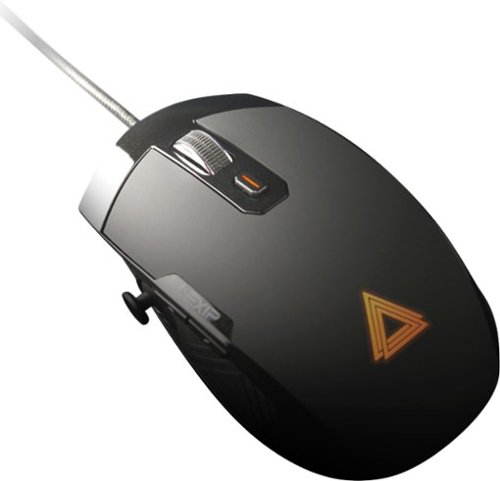
Lexip - Pu94 Wired Gaming Mouse - Wired - Black
Take out your enemies with sharp accuracy by using this Lexip Pu94 wired gaming mouse. The ergonomic construction provides a comfortable grip during marathon gaming sessions, and the wired design helps ensure low latency. This Lexip Pu94 wired gaming mouse boasts a laser sensor for pin-point precision, and the programmable buttons enable customization.
Innovative mouse that's not just for gaming
Customer Rating

5.0
Posted by: bredeker
from WI
on October 30, 2019
The Lexip Pu94 is easily the most unique mouse I have used. It feels like a high quality device with an accurate, high-resolution sensor. But what really sets it apart from similar gaming-oriented computer mice from other companies is the multiple two-axis control mechanisms. Although Lexip primarily advertises these extra controls for use when playing video games, I feel they can be even more useful for certain types of productivity applications - CAD programs, for instance. (Full disclosure - I was provided with a Pu94 in order to write this review, which is my honest impression.)
I found the Pu94 to be well-packaged, and that created a favorable impression from the start. It includes a good-quality USB (type A to micro B) cable with a braided jacket. The cable is detachable, but the mouse is not wireless; it does require the cable to function. (The included cable doesn't seem likely to wear out too quickly from rubbing on a sharp corner, so eventual replacement is probably not a major concern here - but being detachable does make it easier to source alternatives if you want a longer or shorter one.) There is a comfortable soft-touch coating applied that I felt provides a pleasant amount of "grippiness." The functional mechanisms of the mouse (like the buttons) didn't feel like there was any unintended "play" in them. I personally found the in-hand weight to be pretty satisfactory (though it does not come with adjustable weights, which may disappoint people who use other high-end mice that allow this to be customized).
Of course, you can't handle the Pu94 without immediately noticing the marquee feature - the additional controls. There is a little joystick to use with your thumb, as well as some other buttons on that side that are commonly found on other mice, like for forward/back. (This joystick also makes the Pu94 decidedly not for left-handed use. It would be nice if Lexip could someday offer a mirrored form factor to accommodate this type of user.) In addition to the "thumb-stick," the whole top shell of the mouse can tip front-to-back as well as side-to-side, like a second joystick. (A "joy-shell" if you will.) Each of these extra controls is indeed tracked independently as an additional joystick control, though Lexip's driver software does need to be installed to access the full configurability of these.
Without the Lexip software installed, as a regular mouse, the Pu94 works fine, albeit without the additional joystick functionality. The default configuration for the thumb joystick did mimic the mouse scroll wheel on one of its axes, and some simple DPI mode-switching functionality for the sensor is also available. Unfortunately, for non-Windows users, the Lexip software is not yet available, so this is really as far as the Pu94 goes. It would be great to see Lexip support Mac and Linux users someday.
On Windows, the Lexip software is still just a bit rough. I encountered some alert messages in the installation process that were still in French. Perhaps related to these alerts, the installer failed to place an icon for the configuration utility on my Start menu so I had to find it in my Program Files directory and launch it manually. Once running, it does provide pretty comprehensive customizability for the mouse - including the default behavior of all buttons and the unique additional "joysticks."
Multiple profiles (using the French word "profil" in the interface) can be created, and the Lexip software will switch between them based on the path of the program in the foreground window. Lexip has links on their Web site to download some preconfigured profiles for popular applications. However, the set of downloadable profiles is fairly limited and I could not find profiles for several applications I use. Even for the ones I downloaded, I also needed to manually enter the path to my .exe file. I really hope Lexip will add a more robust feature for matching the running program in the future (even if that just means supporting regular expression matching against paths, for advanced users that understand what this means; this would allow the profiles to accommodate programs where updated executables are kept in unique subdirectories).
I have spent a lot of time tinkering with profiles and trying out various assignments of functionality to the extra joysticks. I have actually not found these to be as "game-changing" (hah) while playing video games as Lexip envisions. I tried out their downloadable Cities: Skylines profile, as well as custom ones in a few other games. Sometimes, the extra functions (mostly the "joystick" trigged by moving the shell of the mouse as a whole) are just in the way, and seem better off not to have assigned behavior. However, once you find just the right function to apply to one of the extra joystick controls, this mouse feels amazingly useful. Thus far, I'm most in love with the thumb joystick as a way to manipulate the camera in CAD programs that have a 3D view. I primarily like this when using Autodesk Fusion 360. I have also been configuring it for use in software used to prepare 3D models to be 3D printed, since these have a 3D view of the model as well.
In the end, the Pu94 requires some commitment to unlocking its potential. As a plug-and-play mouse, it's well built but the extra controls are just a non-factor. However, for a power user that invests the configuration time, these unique controls definitely have their uses. It's this unique functionality that sets the Pu94 apart, and makes it worth purchasing.
My verdict? If you want a high quality computer mouse that doesn't require tinkering, there are probably other mice that would be better for you than the Lexip Pu94 (even though it is well-made and works as standard mouse out of the box). On the other hand, if you want a uniquely rewarding experience and don't mind spending time figuring out the configuration that works best for you, the Lexip Pu94 is absolutely one of the best computer input peripherals I'm aware of on the market (even considering the improvements that could still be made to the configuration software). I would definitely recommend anyone in the latter set of people consider purchasing this mouse, and that's the audience to whom my final rating of 5-stars is directed.
I would recommend this to a friend!
Mobile Submission: False
+1point
1out of 1found this review helpful.

Lexip - Mouse Ceramic Glide Feet (6-Piece) - Black
Increase precision with this Lexip ceramic glide feet mouse upgrade kit. A set of six ceramic pads let your mouse glide easily for improved accuracy and help extend the lifetime of your mouse by reducing wear and tear. This Lexip ceramic glide feet mouse upgrade kit includes stickers and alcoholic wipes for thorough pre-application cleaning.
Surprisingly nice mouse upgrade
Customer Rating

5.0
Posted by: bredeker
from WI
on October 28, 2019
These ceramic feet were designed by Lexip for their Pu94 gaming-oriented computer mouse, but this package is sold as an independent upgrade for any mouse that you might want to try them on. I was provided with a set to in exchange for this honest review, and I have to say that I did find them to be a positive improvement.
I tested these on a Logitech mouse that I really like using. I've had it for over a year. The original teflon surfaces on the bottom of that mouse weren't in too bad of shape, but I wanted to see if these feet could make it any more pleasant to use - and I think they actually did. The mouse now seems to move with just a little less friction than I remember. (I typically use this mouse right on a desk surface, with no mouse pad.) I'm also much more confident that the ceramic material won't scratch, and can hopefully be cleaned more easily and quickly than the teflon.
These feet are just slightly thicker than the original teflon pads. In fact, the increased thickness can sometimes require use of a manufacturer's software to tune the mouse's sensor for the extra distance. However, I did not have to do that - I've noticed no problems with the mouse tracking as compared to before the upgrade. But, this possibility is something to be aware of. (I don't think the height difference would be noticeable in hand, either - it certainly wasn't for me.)
I also have not seen how these add-on feet will fare in the long-term. I have no reason to doubt the ceramic will be just fine; if anything, the double-sided adhesive dots that hold them on may prove to be a weak point just as it sometimes is for the common teflon feet. For now, however, I haven't had any problems with the adhesion.
I probably wouldn't recommend applying these to a bargain-basement mouse that costs less than the set of feet. On the other hand, if you have a mouse you really like using and want to try improving the feel even a bit more, these are certainly worth trying.
I would recommend this to a friend!
Mobile Submission: False
0points
0out of 0found this review helpful.
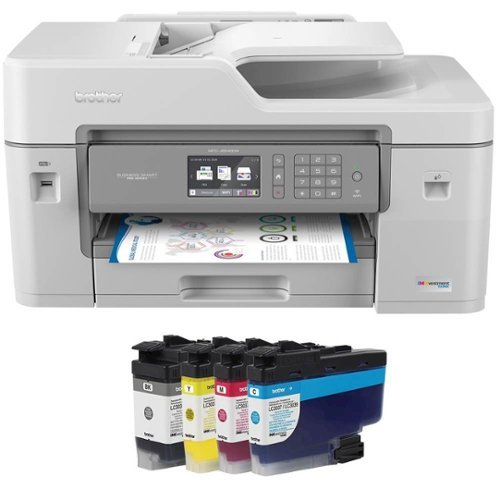
Brother - INKvestment Tank MFC-J6545DW Wireless Color All-In-One Inkjet Printer - White/Gray
Brother MFC-J6545DW INKvestment Tank all-in-one inkjet printer offers print, copy, scan and fax up to 11" x 17" and feature cartridges that work with an internal ink storage tank to deliver up to 1 year of printing. Help take the guesswork out of when to replace ink by using the unique Brother Page Gauge, a visual, numerical way to know the amount of ink you've used and the amount of ink you have remaining. Includes mobile device printing, 11" x 17" scan glass, automatic two-sided printing and a 3.7" touch screen.
SOHO all-in-one with tabloid paper size support
Customer Rating

4.0
Posted by: bredeker
from WI
on October 22, 2019
Brother's MFC-J6545DW is squarely aimed at home- and small-office duty. It relies on a couple of key features to differentiate it from other inkjet all-in-ones - support for larger paper sizes (up to 11" x 17") and economical consumable costs. It handles typical office printing needs very satisfactorily, but also didn't quite live up to some of my expectations. (Full transparency: my unit was provided by Brother in exchange for an honest review.)
There were a few things I really liked about this all-in-one. By far the most noticeable is the larger paper size support - this machine supports tabloid-size paper, and this means it is also a fairly large machine. It's definitely the largest inkjet all-in-one I've handled, and pretty hefty as well. Of course, this means it has some extra flexibility due to its significantly larger area. For instance, it can handle scanning side-by-side pages from a bound document (like a magazine or book). I liked this feature, but would advise anyone who has limited space to consider its dimensions carefully.
The INKvestment system is also appealing to me. Brother's projected costs per page are very low, and standard capacity cartridges are included in the box (no starter cartridges here). The cartridges clearly show how much liquid ink is inside. The actual consumable ink cartridges are independent of the actual print head and nozzles. While Brother isn't the only company to be trying to make ink costs more economical, they seem to have a pretty good implementation. Time will tell how accurate the usage estimates are, and how reliable the components are, but for now I am pretty pleased with Brother's goal here.
I was very pleased with the speed and quality for text and simple graphics (standard office documents). Some photos on "best" mode with glossy paper, on the other hand, did take significantly longer to print. Of course, that speed/quality trade-off is understandable. I was able to get printing to the MFC-J6545DW right away from multiple computers and mobile devices via my Wi-Fi network - no drivers were strictly necessary. (I did, however, eventually install the latest drivers from Brother on both a Windows and Mac computer.) I was satisfied with the quality of scans from this machine, and it was reasonably easy to work with the scanner (on par with other networkable all-in-ones I've used). Overall, pretty decent for day-to-day office-type needs.
Unfortunately, I did also run into some issues. None of them turned out to be deal-breakers, but they do keep me from recommending this printer without reservation. I've purchases three Brother color laser printers in the past decade, and all have worked really well (and are still working - I've gifted some to family as I've upgraded). My experiences were so great that the problems I did run into with this model were surprising. Happily, however, the worst issue cleared up on its own and my other criticisms are relatively minor.
First of all, during the initial set-up I ran into two problems. First, there was an unexpected amount of liquid ink that got into the paper path. Cartridge installation was so easy, and they clicked solidly into place - so I am skeptical that was the cause. I was able to blot up some of the ink that my test print pages were not picking up themselves, and the printer does not seem to be leaking any further ink, so I am not worried going forward. The second issue during set-up was a pretty big source of frustration, however - during the calibration process, the printer detected jammed paper numerous times and would not complete the calibration print. Each time, there appeared to be no real issue with the paper feed (like wrinkled or "caught" paper). I even went as far as requesting warranty service - and then suddenly, after about 24 hours, it began to work fine when I tried once more. Ever since, there have been no issues at all with jams. It seems very mysterious, but now that it's working I guess I can't complain too much.
My final negative impression of this machine is that it does seem to press some fine lines into photo paper. While photos look pretty good, from certain angles the light catches on these lines and they are noticeable. I suspect this is a side effect of the paper feed mechanism, and I've been unable to find a way to improve the results. Photos aren't bad, but I guess for this reason alone I would not recommend the machine for anyone that wants to print lots of high-quality photos. On the bright side here, it can print full-bleed (edge-to-edge) letter-sized photos.
So, there you have it - if you want a fast all-in-one that works smoothly with many devices on a home network, and primarily do text and light graphics printing, this machine is well worth a consideration. The INKvestment system should keep consumable costs very reasonable, compared to many cheaper inket printers that make up the profit by forcing you to buy expensive cartridges after the anemic starter cartridges run out. The large paper-size support may make it too cumbersome for some home users, but I personally found it to be a nice feature. I did encounter a few issues that I don't think are endemic to this model, but wanted to relate my experience fully. I would definitely recommend this all-in-one were it not for those issues; as it stands, I would give it a tentative recommendation for people that would like the larger paper support and economical ink replacements.
I would recommend this to a friend!
Mobile Submission: False
+1point
1out of 1found this review helpful.
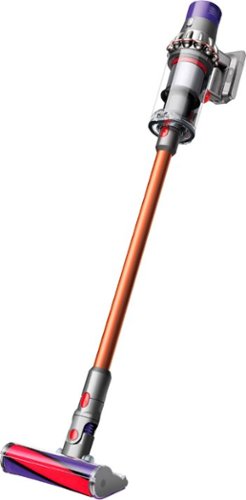
Dyson - Cyclone V10 Animal Pro Cordless Stick Vacuum - Copper
Big machine suction power* but with cord-free versatility. The Cyclone V10 Animal Pro bagless cordless pet stick vacuum has a 40% bigger bin than the previous V8 Absolute model and up to 40 minutes of fade-free power with the soft roller cleaner head (in Suction mode 1). The new torque drive cleaner head removes more dust from carpets. The soft roller cleaner head removes fine dust and large debris from hard floors. The Cyclone V10 Animal Pro cord-free vacuum quickly transforms to a handheld vacuum for quick cleanups, spot cleaning, and cleaning difficult places.* Suction tested to ASTM F558 at the flexible inlet.
Versatile "stick" vacuum with lots of power
Customer Rating

5.0
Posted by: bredeker
from WI
on September 15, 2019
This is the first "stick"-style vacuum that my wife and I have used - from the company that popularized the style. Dyson's V10 Animal Pro definitely does not lack for cleaning power, and has a nice, modular design for its attachments. It has a few quirks that take a bit to get used to, but nothing that should dissuade a prospective buyer. (In the interest of full disclosure, this vacuum was provided to me in exchange for my honest review of it.)
The V10 Animal Pro is pretty simple to get going with. Just plug it in to charge with the included DC power adapter. (It comes from the factory mostly depleted, but this is how all responsible lithium-ion battery-powered products should be shipped.) The attachments are easy to, well, attach. This model comes with two heads for floor cleaning - a general purpose head for carpet, and a head with soft rollers that works well on hardwood floors. Construction is typical for a Dyson product, with nice materials and a finish that is pleasant to handle. The only part of the initial set-up that we found a bit lacking was that it only comes with an illustrated quick-start guide. While the pictures are generally clear, a few times we tried to figure out the significance of what an illustration was showing. Both my wife and I would have appreciated some descriptive text, if not an included manual.
After the initial charge, this vacuum impressed up with how much it was able to pick up from the start. We did a pass on pretty much our whole house, including carpeted and hardwood floors, and it actually picked up quite a bit more dust and hair from our dog than we anticipated. My wife noticed in particular how convenient this vacuum was for cleaning carpeted stairs. On the other hand, Dyson's trigger-switch design requires the user to keep holding the switch down to run the vacuum, and this felt "unusual" to us compared to past vacuums. However, Dyson's rationale for this - to encourage battery life savings - is understandable, and it's something that we'll certainly adapt to.
The dustbin on this model can hold quite a bit - we could do a pass on our whole house without needing to stop to empty it - and easy to empty as well. The lower lid simply flips open to empty it - no need to detach and reattach anything. (Some longer hair did stay behind and needed to be manually pulled out. The hair wasn't tangled or anything, so this wasn't difficult to do, but we didn't want to let it accumulate and become more difficult to remove.) And of course, once emptied, Dyson includes a convenient wall-mount that also holds the charger plug so that it can begin charging and be ready for its next use.
Speaking of charging, I would normally like to see a replaceable battery pack on something like this - if for no other reason than reassurance that battery cells naturally degrading with use won't render this vacuum non-functional. On the other hand, plenty of premium products are including non use-replaceable batteries, and in practice I've had few issues with them having shortened lifespans. The nature of the integrated design may even allow the device to better condition the battery cells for longer life. For now, it's too early for me to say this is an issue with Dyson's design.
I previously felt like a cordless stick vacuum was more of a secondary vacuum to use for special tasks that benefited from the mobility (like stairs). The V10 Animal Pro, however, could easily serve as our primary vacuum since it can handle all our floors and seems to be very thorough. However, if you are looking at purchasing a stick vacuum as a special-purpose tool, that might be one of the only reasons to consider a different model. The V10 is certainly not heavy, but is a bit heavier than Dyson's "lower-numbered" models. It also carries a price tag to match its all-around top performance, so a V8 or V7 may be a more pragmatic choice.
In terms of performance as a primary vacuum that can do it all, the V10 Animal Pro can definitely fit that billing. Even though it is on upper end of Dyson's line-up, gaining both the cordless mobility and superior suction could mean this vacuum fills the need for multiple special purpose vacuums. So far, my wife and I are satisfied that it has met Dyson's performance claims, and don't see a significant reason to not recommend it as a primary vacuum.
I would recommend this to a friend!
Mobile Submission: False
0points
0out of 0found this review helpful.
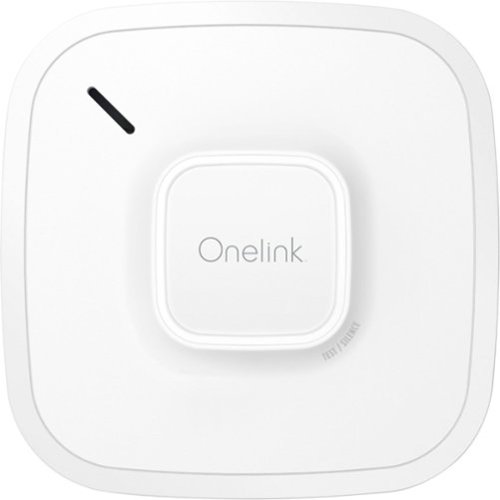
Onelink - Smart Smoke and Carbon Monoxide Alarm
Keep friends and family safe by installing this Onelink smart smoke and carbon monoxide alarm in your home. The backup battery lets protection continue even when the primary battery runs out of power. This Onelink smart smoke and carbon monoxide alarm uses voice alerts to notify you of the type of danger and its location.
Safety-oriented smart-home integration
Customer Rating

4.0
Posted by: bredeker
from WI
on August 26, 2019
Fire and carbon monoxide alarms are likely not the first things that come to mind for most people as essential smart devices to integrate into a smart home system - at least, they weren't for me. However, after hearing about the Onelink combination smoke and CO smart alarm by First Alert, I realized that early, remote notification about emergency situations at home is a powerful use case for smart-home devices. On top of that, I was excited by the prospect that I might be able to gain this for my home's entire hard-wired, interconnected system by replacing just a single unit. So far, I think the Onelink alarm is a solid addition to my smart-home network.
(The following is an honest account of my experience with the Onelink alarm, but in the interest of full disclosure, I received the unit in exchange for this review.)
As a bit of background, I swapped out an older, hard-wired smoke/CO alarm for the new Onelink alarm. All of the smoke alarms in our home are hard-wired and interconnected with each other; the existing alarms were not made by First Alert. I am reasonably comfortable working with the electrical system in my home. This was not a difficult project - but please, if you are not comfortable doing something like replacing an outlet in your home, consult a professional that can safely perform the physical installation.
Installation was simple. The Onelink alarm includes a couple of adapters that fit the plugs used by common hard-wired systems from competitors; this was a nice touch, as they will make the process faster and reduce the chance for error. In addition, it includes a three-wire connector with pre-stripped wires that can be directly spliced into your home's wiring. Although my existing alarm would have been compatible with one of the adapters, I opted to replace the existing harness with the Onelink's direct-splice connector. Even though I eschewed the adapter, it was a straightforward process - no more difficult than changing an outlet. (Naturally, I strongly recommend carefully verifying that your existing installation was done correctly and you have the hot and neutral AC wires identified. This is where using an adapter would help, as the plugs are all keyed so that you can't cross any wires. Again, if any of this sounds daunting, please seek help from a professional or consider purchasing the completely battery-powered version of the Onelink.)
Once the unit was wired up, initial set-up was similarly easy. I downloaded the Onelink Home app to my iPhone, and followed the prompts to connect to the alarm and make some configuration choices (such as the alarm's name within my smart-home system, as well as the name of the room in which the alarm was installed). The Onelink alarm uses WiFi (as opposed to a dedicated smart home radio protocol like Z-Wave); the set-up process on iOS was able to automatically transfer my home WiFi credentials in order to get the alarm joined to it. Besides notifications for the alarm conditions, the Onelink has a built-in night-light that can be configured and controlled by your smart-home network. I ran the test procedure on the Onelink, and it correctly triggered the other inteconnected alarms in my home. The spoken alerts, which speak the name of the assigned room, were clear and make it obvious that the Onelink alarm is the source (instead of one of the other interconnected ones). In between spoken alerts, the Onelink also emitted a more traditional fire alarm alert sound.
The Onelink alarm includes a built-in battery to act as a backup power source in case the main electrical system is off. The battery is not user-replaceable, but advertised as lasting for 10 years. Based on a warning label on the shipping box, it's likely a lithium battery and was sent mostly discharged from the factory for safety. This does mean that the Onelink Home app will initially report the alarm has having "low battery." It took a little longer than I expected (over a day), but eventually the internal battery must have charged fully and now everything is reported as "OK." I think First Alert could stand to provide a little more detail in the app to explain what is going on - such as listing it as "charging" rather than simply "low battery".
I cannot yet completely vouch for how well the alarm works and whether it delivers on the feature that has the most value to me - notification to my smart phone in the event of emergency - simply because I have not had a fire or carbon monoxide emergency (fortunately). I will note that I carefully triggered both the Onelink as well as one of my older alarms with actual smoke from some burning paper to verify that they were working in the presence of real smoke. The alarms triggered, and the interconnection wire correctly caused other alarms in the house to go off. However, I did not receive notification to my phone. I am not yet sure if I msiconfigured something, or if perhaps the notification requires the alarm to be going off for a minimum period of time to prevent "false alarms" over minor events that are under control (e.g. smoke in the kitchen from a burned meal). I am optimistic that it is simply the latter, but if so, I would like to see First Alert document this in the manual rather than leave users like me wondering. (And if it's not the case - which is too soon for me to say - I would be disappointed that the alarm is not performing one of the basic features I was looking for.)
In summary, if you are interested in smart-home/home automation and you'd like to integrate basic safety functions like smoke and CO detection, I think the Onelink is very much a product worth looking at.
I would recommend this to a friend!
Mobile Submission: False
0points
0out of 0found this review helpful.
bredeker's Questions
bredeker has not submitted any questions.
bredeker's Answers
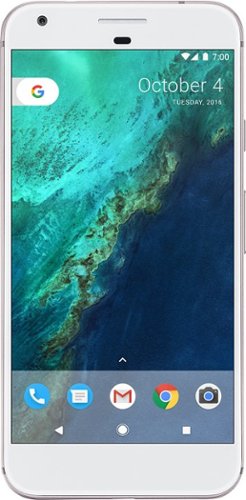
Google - Pixel XL 32GB (Verizon)
Add high-end performance to your everyday life with the Google Pixel XL. A quad-core processor, a 5.5-inch LED screen and 32GB of memory ensure this phone is able to handle daily life, and Corning Gorilla Glass 4 protects the screen. Easy cloud storage ensures you never run out of space on the Google Pixel XL.
Can u transfer ur songs and photo from ur iPhone to this kind of phone
Yes, the setup wizard lets you do this for songs, videos, photos, and more. (You can limit what you all transfer if you prefer.) I had a few music albums that did not transfer as readable files, but for the most part it worked well. It also kept most of my text message/iMessage history. You will need to turn off encrypted backups to let the Pixel have access to some of this stuff, but the setup process tells you how to do that if needed.
9 years, 1 month ago
by
Posted by:
bredeker
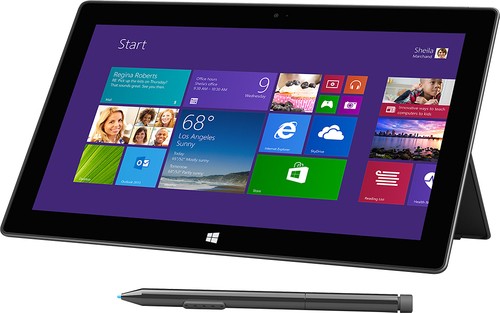
Microsoft - Surface Pro 2 - 256GB - Dark Titanium
Microsoft Surface Pro 2 Tablet: More capable than your average tablet but lighter and smaller than a laptop, the Surface Pro 2 features hands-on productivity with the ability to fully support Microsoft Office (sold separately). Multitask with side-by-side apps, prop up your tablet with the built-in kickstand, or connect accessories via the USB and display ports for a work-efficient desktop setup.
When will 256Gb version be available again? As of 05 Feb 2014 not available at Best Buy.
I noticed as of today (05 Feb 2014) that the 256Gb Surface Pro 2 is unavailable at the moment at Best Buy. Any word on when the new ones will roll out? And, will they be equipped with the newer i5-4300u processor (1.9GHz)?
Supply of these still seems to be constrained from Microsoft, so Best Buy is apparently only taking online orders for them yet (at least, none of the brick-and-mortar stores near me have shown availability). Best Buy periodically gets new stock in, so all I can say is keep checking. When they do come in, they sell out fast too. I was lucky enough to get an order in the second time that I saw stock available in January 2014. I can confirm that mine came with the new i5-4300U.
11 years, 10 months ago
by
Posted by:
bredeker
from
WI

Microsoft - Surface Pro 2 - 256GB - Dark Titanium
Microsoft Surface Pro 2 Tablet: More capable than your average tablet but lighter and smaller than a laptop, the Surface Pro 2 features hands-on productivity with the ability to fully support Microsoft Office (sold separately). Multitask with side-by-side apps, prop up your tablet with the built-in kickstand, or connect accessories via the USB and display ports for a work-efficient desktop setup.
does this Surface pro 2 256gb ssd 8Gb ram have the new Haswell processor in it ?
does this Surface pro 2 256gb ssd 8Gb ram have the new Haswell processor in it ?
or is this a older model that was in storage ?
cause in the past 2 months they updated the surface pro with the haswell processor .
I wasw wondering it if was the haswell processor is it the quad core one for dual core one ?
or is this a older model that was in storage ?
cause in the past 2 months they updated the surface pro with the haswell processor .
I wasw wondering it if was the haswell processor is it the quad core one for dual core one ?
The Surface Pro 2 models, including the 256 GB/8 GB model, all have dual-core mobile Haswell i5 CPUs. The first ones shipped with Core i5-4200U processors, but around the December 2013 timeframe Microsoft started making them with faster Core i5-4300U processors instead for the same price. If you order a new one it will most likely come with the newer, faster CPU.
11 years, 10 months ago
by
Posted by:
bredeker
from
WI

Microsoft - Surface Pro 2 - 256GB - Dark Titanium
Microsoft Surface Pro 2 Tablet: More capable than your average tablet but lighter and smaller than a laptop, the Surface Pro 2 features hands-on productivity with the ability to fully support Microsoft Office (sold separately). Multitask with side-by-side apps, prop up your tablet with the built-in kickstand, or connect accessories via the USB and display ports for a work-efficient desktop setup.
can this unit run adobe photoshop cc.exe not the metro app version ?
can this unit run adobe photoshop cc.exe not the metro app version ?
metro apps are useless when it comes to features and power use.
the real photoshop CC version is not an app and hogs a lot of memory when running on any pc even desktops.
so can this handle the real program of photoshop CC ?
metro apps are useless when it comes to features and power use.
the real photoshop CC version is not an app and hogs a lot of memory when running on any pc even desktops.
so can this handle the real program of photoshop CC ?
I haven't tried Photoshop personally, but you can install and run it since the Surface Pro has full-blown Windows 8 Pro and you can install any Windows application on it that you want. (Only the cheaper non-Pro Surfaces with Windows RT are limited to "Modern UI" apps from the Windows Store.) If you get the 256 GB or 512 GB Surface Pro 2 it will have 8 GB of RAM instead of 4 GB, and they all have fast flash memory for scratch file storage, so I expect Photoshop will run decently as long as you're not expecting workstation-class performance.
The artist for the Penny Arcade Internet comic strip has started to use a Surface Pro on occasion to draw the strip, and uses Adobe Creative Cloud programs on it. Search for "Penny Arcade Surface Pro" to get his take on it. (That was also for the older and slower first-gen Surface Pro.)
The artist for the Penny Arcade Internet comic strip has started to use a Surface Pro on occasion to draw the strip, and uses Adobe Creative Cloud programs on it. Search for "Penny Arcade Surface Pro" to get his take on it. (That was also for the older and slower first-gen Surface Pro.)
11 years, 10 months ago
by
Posted by:
bredeker
from
WI
